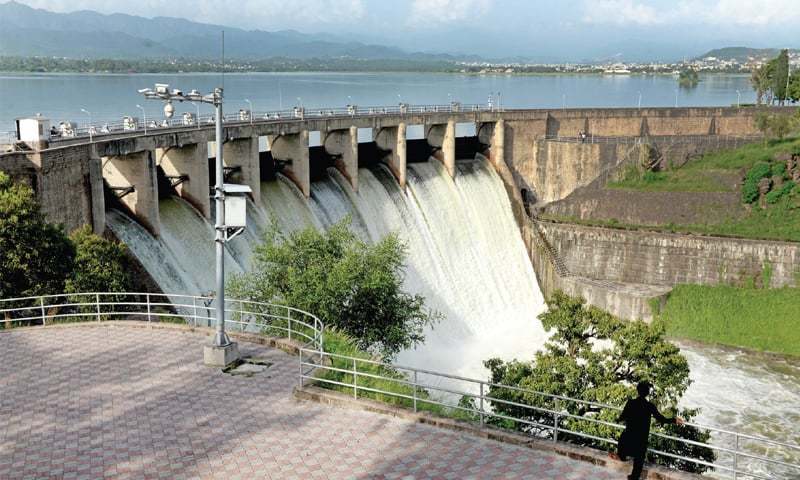LAHORE: With Pakistan suffering an “unprecedented dry” year, both the dams have started depleting fast before getting filled properly, as national inflows drop exceptionally and water planners now fear this dry cycle will continue and extraordinarily impact the Rabi crops.
Although the Indus River System Authority (Irsa) was able to fill Tarbela Lake on Sept 1 after some jugglery with the supplies, the optimum level survived only for 24 hours before beginning to slide. Mangla Dam never went even close to the filling stage — it got stuck at 1,204 feet against the optimum level of 1,242 feet.
Explaining the reason behind the dam depletion, Irsa spokesman Khalid Idrees Rana said it was perhaps “the driest season lacking any parallels” in the country’s history.
He said: “On Monday, the total national inflows were 147,500 cusecs against a demand of 262,100 cusecs – a deficit of 114,600 cusecs. It will, naturally, come from the dams. The authority was able to somehow fill Tarbela Dam, but inflows dropped and put the authority in a quandary: whether to save six-month labour and investment on Kharif crop or save it for Rabi.
Irsa suspects it’s the driest season lacking any parallels in country’s history
The Kharif crops got the preference and the authority started releasing water to the provinces to save the standing crops. At present, the country holds 9.1 million acre feet of water and the Kharif season still has 15 days to go. The Irsa now fears for Rabi season as well. Normally, the authority carries over 10MAF water to Rabi season. It is already down to 9.1MAF, and will certainly go down further.”
“The only silver lining is a wet spell likely to enter the country on Sept 9, which, if substantial enough, could help drop the demand and save some water. However, it will only help have some more carryover water but certainly not compensate for the damage already done,” he added.
The situation is ominous by any stretch of imagination, says an official of the Punjab Irrigation Department. “The system received 20 per cent less water, but Irsa also added to the provincial woes by its wrong policy measures. It did not pass on shortages to provinces at the early stage when it should have – despite Punjab’s protest – and started depleting Mangla Dam. Punjab was told to stay quiet on the plea that Irsa will help fill Mangla during better days. Unfortunately, they never came – partly because of fewer inflows and partly Irsa’s spendthrift policy.”
Even on Monday, Punjab wrote to Irsa that it was still liberal with releases to Sindh when the country was suffering huge deficits.
“According to Para 14(b) of the Water Apportionment Accord, under which Irsa claims to be operating, Sindh’s share is 92,600 cusecs. Add 15 per cent losses and the share comes to 106,500 cusecs. Against this, downstream Chashma Barrage releases on Monday were 130,000 cusecs. These policy goof-ups only add to the national water woes. Even in these trying times, when the country needs each drop of water, 1.7MAF was wasted into the sea. Someone needs to explain who should be held responsible for these blunders.”
Published in Dawn, September 7th, 2021














































